Speaker
Description
Charged-hadron production in relativistic heavy-ion collisions of asymmetric systems is investigated within a nonequilibrium-statistical framework. Calculated centrality-dependent pseudorapidity distributions for p-Pb collisions at sqrt(s_NN) = 5.02 and 8.16 TeV are compared with data from the Large Hadron Collider (LHC). Our approach combines a three-sources relativistic diffusion model with formulations based on quantum chromodynamics, utilizing numerical solutions of a Fokker-Planck equation to account for the partial thermalization (shift and broadening) of the fragmentation sources for particle production with respect to the stopping (net-baryon) rapidity distributions that are calculated in the color-glass model. To represent the centrality dependence of charged-hadron production in asymmetric systems over a broad region of pseudorapidities, the consideration and precise modelling of the fragmentation sources - along with the central gluon-gluon source - is found to be essential. Specifically, this results in an inversion of the particle-production amplitude from backward- to forward-dominance when transitioning from central to peripheral collisions, in agreement with recent ATLAS and ALICE p-Pb data at sqrt(s_NN) = 5.02 TeV. Predictions for p-O at 9.62 TeV are envisaged. [1] G. Wolschin, Beyond the thermal model in relativistic heavy-ion collisions, Phys. Rev. C 94, 024911 (2016). [2] S. Acharya et al. (ALICE Collaboration), System-size dependence of the charged-particle pseudorapidity density at sqrt(s_NN)= 5.02 TeV for pp, p-Pb, and Pb-Pb collisions, Phys. Lett. B 845, 137730 (2023). [3] P. Schulz, G. Wolschin, Relativistic diffusion model for hadron production in p-Pb collisions at the LHC, Phys. Rev. C, in press (2024); https://arxiv.org/abs/2409.17960

